December late in the year 1570.
Shizuko, who knows that the battle will begin early next year if history follows its course, has been focusing on increasing arrow production even before Nobunaga makes peace.
In modern times, arrows made from aluminum or carbon can be used repeatedly, but arrows made from bamboo in the Sengoku period are primarily disposable.
Therefore, the arrows used for shooting multiple times do not require high quality.
The key is to ensure the minimum necessary quantity with the minimum required quality in a short period of time.
If you expect too much and demand more quality than necessary, the completion will be delayed.
If you waste time like that, you won’t be able to keep up with the changing times.
Especially for Shizuko’s army, which has many archers and uses a large number of arrows, if they cannot secure versatile arrows in a short period of time, their ability to continue fighting will decrease.
After securing arrows that meet the minimum quality required as weapons and preparing a sufficient quantity, you can pursue quality and replace them one by one.
“About 3,000 arrows per day.
Considering that we also supply other armies, it seems like we won’t be able to keep up at this rate.”
With the exception of those who use traditional Japanese bows, the short bows used by the Oda army for suppression purposes have standardized specifications, so they can extract the minimum performance regardless of which Ashigaru (light foot soldier) uses them.
Of course, there are differences depending on the individual’s ability, but the basic performance remains the same.
To prevent damage to the Ashigaru (light foot soldiers), it is sufficient to mow down the enemy soldiers who charge with matchlock guns.
However, it is difficult to obtain matchlock guns even if there is ample military funding.
Even the Oda family, which has abundant military funds, finds it difficult to exclusively procure several thousand matchlock guns due to considerations with other countries.
Therefore, Nobunaga came up with the strategy of using simple bows for volley firing, which means raining arrows on the enemy and creating a barrage.
At first, crossbows were considered, but it was found that if the power of the string is weak, it cannot kill a person several tens of meters away.
Compound bows require many components and demand high quality, so in the end, it was decided to mass-produce simple short bows.
Although the effective range is about 100 meters, the time it takes to draw and release an arrow can be shortened to 1-2 seconds with training.
If there is an enemy army that charges at an average of 100 meters in 13 seconds, it is possible to rain arrows about 10 times.
Nobunaga judged that it can expect sufficient effectiveness and tried to incorporate the volley firing tactic with bows into each army.
Shizuko is in charge of overseeing the production of bows and arrows.
Since it was her established strategy, it is natural that Shizuko has the know-how to mass-produce them.
Furthermore, in addition to mass production, there is a system in place to ensure that the bows and arrows produced can be efficiently handled by the Ashigaru (light foot soldiers).
The length of the arrow is said to be the length when both hands are spread out, subtracting 38.1cm (15 inches), and dividing the result by 2.
If it deviates significantly from this length, the arrow cannot be drawn properly and it can cause joint pain.
To solve this problem, Shizuko’s countermeasure was to align the soldiers according to the arrows.
In other words, instead of aligning each Ashigaru (light foot soldier) with an arrow, the length of the arrow is standardized, and Ashigaru (light foot soldiers) who fit that length are aligned.
“I’m sorry.
It seems difficult to increase production beyond the current level.”
“That can’t be helped.
Please prioritize delivering to other armies and put our army on hold.
Of course, confirm the priority of delivery destinations with the Lord first.”
“Understood.”
“By the way, it has gotten quite cold.
Take care of your health.
I’ve been feeling hot since earlier.”
The reason Shizuko feels hot even in winter is because Wittman and the others are curled up around her.
The body temperature of a wolf is always high, ranging from 40.6 to 41 degrees Celsius, and they regulate their body temperature by opening their mouths and sticking out their tongues instead of sweating.
“Battle rations… um, has the menu for ‘ikusa meshi’ (battle rice) been delivered to Lord Takenaka?”
Takenaka Hanbei sent a letter to Shizuko suggesting a name change from “military rations” to “ikusa meshi” because the former name was not easily understood.
Shizuko didn’t have any particular attachment to the name, so she didn’t object to the name change.
Since then, the battle rations prepared by the Oda army have been called “ikusa meshi.”
“Yesterday, it arrived safely and a messenger came quickly.”
“Was the prototype of the 5-liter manual pressure pump completed?”
“The prototype was delivered a few days ago, and yesterday I sent it back along with the report written by Shizuko-sama.”
“Oh, right.
I forgot.
Well, that’s fine then.”
They had requested the production of a hand pump with a pressure system to efficiently spray repellents for pest control.
Recently, they have been inundated with various requests and inquiries, so Shizuko had forgotten that the prototype had arrived and she had personally verified it.
In the verification process, Shizuko identified the nozzle accuracy as a problem.
Due to technical limitations, the spray was too wide and the amount sprayed at once was too much.
The portable tank would be emptied in 5 minutes, rendering it useless.
“Lately, I’ve been receiving various things, verifying them, and returning the reports, so I completely forgot about it.”
“You seem tired.
How about taking a break for a while?”
“That’s a good idea.
It’s almost the end of the year, so I’ll take a short break.”
As the new year approached, Nobunaga prepared his military forces.
He completely blocked the routes (land and sea) connecting Kyoto and Hokuriku, and had Niwa (Niwa Nagahide) enter Sawayama Castle to ensure the safety of the highways between Gifu and southern Omi Province.
In history, from here, he would launch a rapid invasion, with the conquest of Nagashima Ikko-ikki in May and the burning of Mt.
Hiei in September.
Thinking about the busy days of battles in the coming year, Shizuko felt exhausted.
(I have been able to reproduce various manual tools… but none of them have satisfactory performance.
It’s not good to expect high performance from the beginning.)
Shizuko felt discouraged as she thought about the painstaking work of repeatedly verifying and improving the sand mountain, knowing the high-performance finished product.
She wanted to adopt a method where products that meet the required functions, even if their performance is insufficient, are put into practical use and tested by a large number of people to identify problems and areas for improvement.
It was necessary to find the most suitable form for the people of this era to operate, rather than a refined and perfected form.
She believed that it would be better to gather opinions from many users and gradually approach the ideal.
However, in reality, only Shizuko could conduct the verification, and the process of improvement and testing relied on her judgment for productization.
Therefore, the current situation can be described as Shizuko being the bottleneck, as there is no alternative to her for making judgments, which is a critical point that cannot be improved by improving other aspects.
(Even so, the ‘tools’ are gradually coming together.
I wish things would become easier… but for some reason, they only get busier.
By the way, what was the ‘second unreasonable request’ that Lord Konoe mentioned? Since then, there has been no sign of him mentioning anything.)
Shizuko never dreamed that the ‘second unreasonable request’ would be to marry Sakihisa (Konoe) and become his adopted daughter.
Unable to come up with an answer even after thinking about it, she decided to go to a hot spring to change her mood.
In the snowy winter of Gifu, Nobunaga quietly waited for the right moment.
As those around him began to abandon the Oda family, he simply waited for an opportunity, biding his time.
“Yoshinari, let me ask you honestly.
Do you think I am finished?”
While eating Yanagawa hot pot, Nobunaga asked Yoshinari Mori, who was sitting across from him.
Yoshinari Mori, visibly surprised, hesitated and wandered his gaze, unsure of how to answer.
Seeing his reaction, Nobunaga laughed softly and continued speaking.
“Good.
Your attitude makes it clear to me.”
“I apologize.”
“You don’t need to apologize.
It is true that I have been defeated.
Those who know me when I once ruled Kyoto would see me as pitiful in my current state.”
“My Lord…”
Yoshinari Mori struggled to find the right words to address Nobunaga.
However, he couldn’t find the words to say.
Sensing Yoshinari Mori’s feelings, Nobunaga, as always, made a defiant assertion.
“Don’t worry, Yoshinari.
I am not lamenting my situation.
And I am grateful for the loyal retainers who remain with me.
That’s why I won’t give up.
I will crush the enemies one by one and seize control of this land until I have achieved my ambition.”
“My Lord!! Although I am an old man, I am prepared to devote myself to fulfill your ambition.”
“I’m glad you’re here.
I have a favor to ask of you right away.”
“Yes, please tell me anything.”
Yoshinari Mori, who was already unable to wield a spear due to a shoulder injury, was prepared to fight even with a spear attached to his body if it was Nobunaga’s command.
However, Nobunaga’s request was unexpected.
“The favor I’m asking is none other than about Shizuko.”
“What about Shizuko-sama…?”
“You must also know.
Shizuko has achieved numerous military exploits.
And that is the problem.”
Nobunaga’s words that achieving military exploits is the problem made Yoshinari Mori tilt his head in confusion.
Shizuko, even after Nobunaga fell ill, led the troops and stood on the front lines of Usayama Castle, holding off the siege of the Asakura-Azai coalition forces.
Later, she collapsed from overwork, but Nagayoshi took her place and scattered the anti-Oda forces in various places, and Shizuko, who returned midway with Keiji and Saizo, helped restore the transportation network in southern Omi Province.
Even those who used to mock Shizuko as a “lucky woman who had no military achievements on the battlefield” were left speechless by her remarkable achievements.
Yoshinari Mori couldn’t imagine what the problem was with her achievements.
“Shizuko’s way of fighting is truly ‘unorthodox.’ She fights not to take heads, but for the victory conditions she sets for herself.
I don’t have a problem with that itself.
The problem arises when Shizuko achieves more military exploits, and the fact that she is a ‘woman’ becomes an issue.”
“What do you mean…?”
“Shizuko is already twenty years old and has missed the suitable age to become a wife.
But think about it, Yoshinari.
Shizuko, who has military achievements and influence in domestic affairs, being single means that someone who wants to gain her influence will emerge.”
In the Sengoku period, it was common to marry and start a family as early as 10 years old, and at the latest by 18 years old.
There are also cases like Oichi, who married at 21 years old, but it is said that this was either because Nobunaga didn’t want to let go of Oichi, or because Oichi had been married once before and divorced, and then remarried with Asai Nagamasa.
In any case, Shizuko, who is unmarried at the age of 20 and has no marriage experience, is considered a woman who missed her marriage opportunity in the Sengoku period.
“We don’t want any unnecessary disturbances like before.
We can’t use her as a pawn in a political marriage.
It’s also a problem to marry Shizuko to someone, as she has many secret techniques in her mind.
I have thought of a way to elevate her position and easily reject these kinds of proposals.”
“Should we make her the Lord’s adopted child?”
“I considered the adoption option, but there will definitely be disputes over the successor issue.
I want Shizuko to take on a branch of the Oda family.
So instead of adopting her, it would be better to have her adopt one of my children.
But it’s not enough to just have her adopt a child.
It has to be a child with special circumstances.”
In the Sengoku period, adoption and political marriages were common, and even Nobunaga, who was close to being the ruler of the country, adopted and sent his own children as hostages.
By having Shizuko adopt his own child, it would be possible to incorporate her as a member of the Oda family.
And by making Nobunaga’s child the successor instead of his own, it would show loyalty to Nobunaga to those around him.
But even if she becomes a member of the Oda family in some way, there is a possibility of jealousy from relatives.
Therefore, to incorporate her as part of the Oda family, a very delicate balance is required.
“Yoshinari, what I’m asking of you is no small matter.
Please become the guardian and educator of my child with special circumstances.
It is not easy for me to ask someone like you, who has achieved many military merits, for such a task, but there is no one else who can fulfill this role.”
Mori Yoshinari has achieved many military merits in the 16 years he has served under Nobunaga.
He contributed to Nobunaga’s succession to the Oda family and the unification of Owari Province.
He participated in the Battle of Okehazama with Imagawa Yoshimoto, and when Nobunaga went to Kyoto, he served as the vanguard with Shibata Katsuie.
In the Battle of Anegawa in June, he stopped the advance of the Isono Inshou unit, and in the Battle of Usayama Castle, he took the lead and continued to fight.
For Nobunaga, Mori Yoshinari has always been and will continue to be his right-hand man.
It was not strange for Nobunaga to think that it would be humiliating for Mori Yoshinari to be asked to be the guardian and educator of his child with special circumstances.
But as he said, there was no one else who could understand and assist Shizuko with her special circumstances like Mori Yoshinari.
“My Lord, there is no need to worry.
I may be a lowly farmer who cannot wield a spear, but there is nothing that would make me happier than to be of use with these old bones.
I will accomplish this great task.”
After saying that, Mori Yoshinari bowed deeply.
From an outsider’s perspective, it may seem like a demotion, even being pushed to a lower position.
However, Mori Yoshinari, who understands how valuable Shizuko’s existence is, understood how much effort Nobunaga put into reaching this conclusion.
No matter how many achievements he made, Shizuko had an undeniable disadvantage, which was being a woman.
That position could sometimes threaten her existence, so Nobunaga thought of preventing it in advance, and Mori Yoshinari understood that.
“I’m counting on you, Yoshinari.”
Hearing Mori Yoshinari’s words, Nobunaga smiled gently and said so.
Even after surviving the first Oda encirclement, the Oda family was still in a disadvantageous position.
Those who had been riding on his winning horse turned their backs and tried to join the anti-Oda alliance for various reasons.
Nobunaga dismissed those who left as useless, but even in this situation, he valued and rewarded the retainers who did not betray him.
Naturally, Shizuko, Mitsuo, and Ashimitsu, the time travelers, had no intention of betraying Nobunaga, and those around them had the same mindset.
However, the time travelers, especially Shizuko, did more than just pledge their loyalty.
Ashimitsu contributed in battles, Mitsuo in cooking and livestock farming, and Shizuko prospered Owari and Mino through agricultural reforms and various technological advancements.
Especially with Shizuko’s agricultural reforms over the years, Owari was overflowing with food, which was unimaginable in the Sengoku period.
Within the Oda family’s territory, people didn’t need to kill and plunder others to obtain food, and they weren’t pushed to the brink of risking their lives to work as migrant workers during the agricultural off-season.
This was all thanks to Shizuko’s guidance to Nobunaga.
Some of the defectors knew about this.
Therefore, it was only natural to consider recruiting Shizuko as a good gift to the anti-Oda alliance.
“Even if they increase the tolls at the checkpoints along the way fifty times, I won’t give up.
I want them to channel that motivation into something else.”
She could only sigh.
But Shizuko, who thought it was a problem to leave it without any countermeasures, gathered those who were involved in the intrigue.
It was Shizuko, Ashimitsu, Mitsuo, and Gorou, the four of them.
Gorou was added to the group because he had received numerous cooking recipes from the other three and was now in a position similar to being Nobunaga and Nohime’s personal chef.
Gorou also served as the head chef at Sakihisa (Konoe)’s banquets, and he was the one who knew the ingredients in the current Owari and Mino the best.
“We’ve gathered quite a lot.
Should we use them as ingredients for tempura or something?”
Ashimitsu shrugged his shoulders while looking at the mountain of documents in front of him.
The amount of paper was enough to create a small mountain, clearly showing how important they were within the Oda clan.
“I’m not interested in politics.
If it improves my cooking skills, then I’ll consider it.
But considering the current situation, the best option is still the Oda clan.”
“Even if you betray and find yourself in a new position, there’s no guarantee that you’ll be protected.
If the purpose is simply to ‘recruit,’ there’s a possibility of being eliminated after betraying.”
“Yeah, that’s true.
As the old man said, I can’t think of any good things that would come from betraying, you know.”
“It’s Mitsuo, not the old man.”
Gorou had no interest other than cooking, but on the flip side, it meant that he could betray the Oda clan for the sake of his culinary path.
“Based on the information I gathered, the anti-Oda alliance is not united.
So even if Gorou were to betray, there is a high possibility that the anti-Oda alliance would not take him seriously.”
Shizuko gently tried to persuade Gorou.
Currently, if he were to betray, only destruction awaits him.
Especially if he were to abandon Nobunaga at this point, there is a high possibility that his head would be separated from his body.
“No, I understand.
Even though I’m not knowledgeable about politics, I can’t think of anything good that would come from betraying the Oda clan at this critical moment.
It would be against my principles to say goodbye just because it’s inconvenient for me, even though I’m indebted to them.”
“That’s a wise decision.
Well, rest assured, if you do betray, I’ll make sure your head is cleanly cut off.”
“Where is the assurance in that…?”
“Are you saying that it’s better to be disposed of by someone you know rather than by a stranger?”
Shizuko’s head started to ache from their strange conversation.
But none of the three showed any signs of falling into intrigue, and she felt relieved inside.
If the time travelers were to scatter, it would undoubtedly lead to a muddy battlefield.
For Shizuko, that was something that had to be avoided at all costs.
“For now, I expect the intrigue to continue, so please report everything to the Lord.”
Shizuko, recognizing that everyone’s intentions were unified, ended the meeting with those words.
The Koga group, who had defected from the Rokkaku clan, did not immediately become subservient to Nobunaga.
Originally, the way of life for the Koga group was not aggressive.
They had used military force and ninjutsu to protect themselves from the unstable social situation.
The reason they cooperated with the Rokkaku clan was also for the survival of the Koga group.
Seeing the decline of the Rokkaku clan, they gradually leaned towards Nobunaga.
However, the Koga group did not become vassals of Nobunaga.
They were dissatisfied with Nobunaga’s high-handed attitude.
Even if the Koga group were to declare their allegiance, it would be a superficial obedience.
The Koga group found themselves in a delicate position, and it was at this time that they received shocking information.
“That’s ridiculous… Where did they have that much money?”
It started with a report from a scout who was sent to Owari.
The report stated that Nobunaga was collecting something from various parts of Owari using wagons.
Upon receiving such reports, the Koga group increased their number of spies.
They tried to investigate the contents of the wagons, but the heavily guarded wagons were impossible to approach.
However, they could infer from the deep tracks left by the wagons that they were carrying something of considerable weight.
And an opportunity to know the contents of the wagons presented itself.
When they were about to reach Gifu, one of the wagon wheels broke, causing the contents to spill out.
What they were transporting was gold bars.
And not just a few, but dozens, possibly even over a hundred gold bars were stacked inside.
That alone was enough to cause astonishment, but an even more astonishing fact was revealed.
The Oda soldiers, thinking that the wagon wheel was irreparable, decided to distribute the gold bars among the other wagons.
It turned out that the other wagons also contained a large amount of gold bars.
In the end, there were 86 gold bars and 52 silver bars.
When the gold bars were seen during the transfer, the Koga spies understood that all the cargo was gold bars.
Panicking, they quickly gathered their opinions with other scouts and immediately sent the information to the Koga group.
The head of the Koga group, upon receiving the report, immediately gathered the leaders for a meeting.
“With that much money, they can easily destroy us!”
“I see.
We will be destroyed overnight.
I believe that submitting to Oda is the only way to survive.”
After witnessing Nobunaga’s vast wealth, they leaned heavily towards submitting to him rather than questioning the merits of doing so.
They understood that they were insignificant in the face of Nobunaga and the Kōga group panicked.
When humans panic, their thinking and perspective narrow, causing them to overlook things that they would normally see.
If the scouts had not been surprised by the large amount of gold and had conducted a thorough investigation instead of hastily reporting it, they would have noticed Nobunaga’s trap.
Most of the wagons did not contain gold bars.
However, they recognized the fact that Nobunaga had a large amount of gold.
From then on, even if they did not find the gold bars when investigating Nobunaga, they would only think that he was “hiding” them.
“The longer we wait, the more suspicious Oda will become of us.
By the time the new year arrives, we must give him an answer.”
The Kōga Fifty-Three Families gathered to discuss, but the conclusion was already clear without any debate.
The Kōga group, with its limited financial resources, had no chance of defeating Nobunaga, who had abundant funds.
There were voices calling for them to join the anti-Oda alliance, but the disorganized alliance would likely be easily crushed if they did participate.
After several discussions, the Kōga group decided to submit to Nobunaga.
They sent a letter of submission to Nobunaga and sent selected shinobi from the Mochizuki and Yamanaka families as hostages.
They also ordered the scattered Kōga shinobi to return to their base.
Upon receiving the Kōga group’s submission, Nobunaga smirked and ordered them to inform the Oda clan of their future operations while granting them a certain degree of autonomy.
In addition to the hostages, he also hired several other shinobi and assigned them to retainers such as Shibata Katsuie.
The skilled Kōga shinobi were incorporated into the Sixth Army and began working under Takigawa Kazumasu.
With this, Nobunaga strengthened his information gathering capabilities and immediately ordered the Sixth Army to gather various information.
Nobunaga’s residence in Gifu was filled with tension.
Nagamasa, his brother-in-law, and his retainers, Endo and Mitamura, as well as Oichi, Nagamasa’s wife and Nobunaga’s sister, were meeting with Nobunaga.
Nagamasa, who had been like a recluse until now, had a clear and refreshing expression, and there was no trace of his disgraceful behavior six months ago.
“Brother-in-law, are you really that surprised?”
Nagamasa smiled, but Nobunaga’s feelings were complicated.
Nagamasa’s proposal was unexpected even for Nobunaga.
“No one would be surprised if you said you were becoming a foot soldier.”
“Haha, I’ve always been surprised by you, brother-in-law.
It might be interesting to indulge in my brother-in-law’s hobbies once in a while.”
Nagamasa laughed, but quickly composed himself.
“First of all, I want to thank you for supporting me when I was so useless.
However, I can’t rely on you any further.”
“And how does becoming a foot soldier connect to that?”
“It’s not a difficult story.
I am now a castaway from the Asai family.
And the Asai family has betrayed the Oda family.
No matter what I do in the future, that fact will not disappear.
The Asai family is destined to perish.
And they will be remembered in history as a family of traitors.”
Nagamasa had accepted his fate.
Furthermore, the Oda and Asai families had vastly different military and financial strengths.
Additionally, Nobunaga showed no mercy to traitors, so there was no hope for Nagamasa to be appointed as the head of the Asai family and continue its existence.
“However, I was once the head of the Asai family.
Therefore, I want to settle things with my father myself.
But I can’t ask a traitor to lend me soldiers.
So, the only option left is to start as a foot soldier under my brother-in-law.”
“…What if I were to defeat your father before that?”
“That is the will of heaven.
It means that I am not qualified to stand on the stage of avenging my father.
Brother-in-law, you should not consider making me your retainer.
Your retainers would not find it amusing.
Shizuko had been working on hydroponic cultivation, which would begin testing from the next fiscal year.
Hydroponic cultivation is a cultivation method that does not use soil, but instead uses nutrient solutions.
It is also known as hydroponics or water cultivation, and it allows for the cultivation of root vegetables that were previously considered impossible.
It is widely used in gardening without any limitations.
The cultivation method that benefits the most from this is wasabi cultivation.
Wasabi is a difficult crop to cultivate due to its need for clear streams, appropriate water temperature, high oxygen content, and a location that does not receive direct sunlight.
If water circulation is used, a facility that can supply a large amount of air is necessary.
The reason why clear streams are necessary is to wash away the allyl isothiocyanate that wasabi releases.
Many plants collect phosphates and water from the soil using VA bacteria in their roots, but wasabi lacks VA bacteria, making it less competitive.
Therefore, it releases a substance called allyl isothiocyanate into the soil to prevent other plants from approaching, but this substance also inhibits the growth of wasabi itself.
This phenomenon is called autotoxicity.
By finely grating wasabi, the enzyme called myrosinase and the compound called sinigrin glycoside inside the cells react to produce the pungent component allyl isothiocyanate.
To prevent autotoxicity, wasabi needs to be constantly exposed to running water.
At this time, if the water is cloudy, the main component of the cloudiness, clay particles, will spread and cause the roots of wasabi to lack oxygen.
Because of this obstacle, wasabi cannot grow unless it is in a clear stream.
The reason why the appropriate water temperature is necessary is that the ideal water temperature for wasabi is below an average of 15 degrees Celsius.
If it exceeds 16 degrees, the amount of dissolved oxygen in the water becomes insufficient.
Oxygen is important for the growth of wasabi, and colder water (with an average water temperature of 12 degrees) is desirable.
The reason for this is that oxygen is more easily dissolved in colder water.
The reason for injecting air into the water when circulating water is to blow away the dissolved allyl isothiocyanate in the water.
Allyl isothiocyanate is highly volatile, so by performing aeration (the act of supplying air to a liquid), accumulation can be prevented.
In order to cultivate wasabi, it is necessary to meet the troublesome conditions of having clean flowing water, no clay particles in the gravel or pebbles, an average water temperature of around 13 to 14 degrees Celsius, abundant dissolved oxygen in the water, and preferably a shaded location.
Cultivation using natural environments requires careful selection of the land, but hydroponic cultivation is easier to meet the necessary conditions for cultivation.
The environment Shizuko prepared for wasabi cultivation is simple.
First, a water supply tank is prepared, and then cultivation tanks are installed in multiple tiers.
A filtration tank is installed above the topmost wasabi cultivation tank.
The filtration tank has multiple stages of perforated bottom plates, and volcanic rocks are laid on each tank.
Water is showered onto these volcanic rocks in the filtration tank.
It is filtered by coming into contact with the volcanic rocks, and by showering the water inflow, the surface area of the water is increased, making it easier to absorb oxygen.
This clean water flows into the wasabi cultivation tanks.
Each cultivation tank has an outlet, and the water flows to the lower cultivation tanks through this location.
The water that has passed through the lowest cultivation tank returns to the water supply tank and is sent to the aeration tank.
In modern times, aeration can be achieved using an air pump, but air pumps did not exist in the Sengoku period.
It may seem like there is no solution, but it is possible to create a makeshift air pump using the principle of negative pressure.
First, an aeration tank is created below the water supply tank, and a bamboo drainage pipe connected to the water supply tank is passed through it.
Small holes with a diameter similar to a straw are drilled in the drainage pipe, and a Factice tube (hereinafter referred to as an air tube) is passed through it, with the tip cut diagonally.
After cutting the tip diagonally towards the outlet of the drainage, the opposite side of the air tube is exposed to the air.
By coming into contact with the air, a vacuum pressure (negative pressure) is generated, and the pressure takes in air and supplies a large amount of oxygen to the water.
By utilizing this principle of negative pressure, a large amount of oxygen can be supplied to the water and at the same time, allyl isothiocyanate can be blown away.
In short, it is a diffuser made with whatever materials are available.
If this water is pumped up and sent to the filtration tank, a clear stream with a high oxygen content can be sent again.
Shizuko used a multi-tier hydroponic cultivation system.
If a device is created that can pump the water from the oxygen-supplied water supply tank to the filtration tank, the rest will be automatically processed.
The water that is discharged from the drainage valve also returns to the water supply tank through a pumping device that uses a water wheel and gears.
By using a vinyl greenhouse, pests can be avoided as much as possible.
If the water temperature becomes too high, it can be replaced with groundwater from nearby mountains.
Daily water temperature checks are necessary, but other than that, only occasional water replacement is needed.
After a year, splendid wild wasabi will be ready for harvest.
With two years of cultivation, magnificent wasabi that was unseen in the Sengoku period can be harvested.
“I found the genuine wasabi in Mino, and you can just take the gravel and pebbles from the nearby river.
With a land area of about 2 hectares, we can cultivate around 40,000 plants, right?”
“As always, the number of cultivations is strange.
However, if we can mass-produce wasabi, our country will prosper.”
Kimyomaru (Oda Nobutada), who was observing the wasabi cultivation system with Shizuko, nodded in admiration.
Wasabi has been cultivated since the Asuka period, but it truly began in the early Edo period.
Wasabi cultivation was not practiced during the Sengoku period, and wasabi for consumption was only harvested from the wild.
“There is no part of the plant that is discarded, from the roots, stems, leaves, to the flowers.
Well, I suppose everyone desires the roots.”
“I heard in Kyoto that they use sharkskin for grating it.”
“I’ll spare you the complicated explanation, but when you grate it finely with a fine grater, the pungent component comes out better.
That’s why sharkskin is the best in that sense.”
While answering Kimyomaru’s question, Shizuko checked the water temperature.
Despite the winter cold, the water temperature was 12 degrees Celsius, which was suitable for wasabi cultivation.
With the ability to produce glass, it was now possible to manufacture stick-shaped mercury thermometers.
Although mass production was difficult, they were highly valuable, so Shizuko requested the production of a total of 10 thermometers for use in vinyl greenhouses and for checking water and ground temperatures.
Thanks to the stick-shaped mercury thermometers, it became easier to observe the temperature inside the vinyl greenhouse, and the task of confirming the room temperature became faster.
“Should we separate the one-year-old genuine wasabi from the two-year-old genuine wasabi and continue cultivation while conducting variety improvement?”
By crossbreeding the cultivated wasabi with the seeds taken from wild wasabi, a variety suitable for hydroponic cultivation will eventually be born.
The timing of its birth is unknown, but it is better to constantly cultivate different varieties than to cultivate the same variety all the time.
“Well, work is done.
Next, I need to arrange the distribution of sake.”
“It’s a tough job.
Well, you are the founder of the Gifu Sake Brewing Company, so I can only say, do your best.”
“I didn’t intend to hold such a prestigious position.”
Shizuko chuckled at Kimyomaru’s words.
Until recently, the sake industry in Owari and Mino was in a state of collapse.
However, Shizuko integrated it into the brewing district and revitalized it by increasing the variety of sake.
Now, it has become a renowned sake brewing region, producing not only cloudy sake but also sake made from Gifu rice and Owari rice, sweet potato shochu made from Satsuma potatoes, fruit liqueurs made from fruits, and plum wine made from white liquor.
Sake produced in each region is unified under the name “Gifu Sake,” and those involved in sake brewing in Owari and Mino are members of an organization called the “Gifu Sake Brewing Company.”
The Gifu Sake Brewing Company is an organization that bridges the brewing district and the merchants.
During the Sengoku period, there was no consideration for delivering goods correctly, and in some cases, merchants were killed and their money stolen, and vice versa.
To prevent such situations, the merchants can safely buy and sell sake, control excessive competition, and have the merchants belong to a single company, which allows for centralized tax collection.
This was the purpose of establishing the Gifu Sake Brewing Company.
The Gifu Sake Brewing Company is basically a company that connects sake brewers and merchants, and membership is free.
However, in order to buy sake from the brewers, one needs to purchase “shares,” which are equivalent to modern-day investment.
The more shares one has, the more they contribute to the development of the brewing district, and the limit of the amount of sake that can be purchased is determined by the number of shares one holds.
It is possible to buy sake even without owning shares.
However, owning shares comes with various benefits because it contributes to the development of the brewing district.
Shareholders can exercise the right to participate in the management of the Gifu Sake Brewing Company.
Just like in modern times, those with more shares have a greater say.
It is possible for someone with only one share to raise an issue, but approval requires a majority of the issued shares to be in favor.
The amount of money to purchase sake is lower for non-shareholders.
For example, while shareholders can purchase 1 liter for 100 mon, non-shareholders can only purchase 700 milliliters for 100 mon.
In addition, if there is a profit, profit distribution is carried out once a year.
The recipients can choose between receiving the profit in money or in sake.
Shares can be transferred, but if one rebels against the Oda clan, all rights to the shares will be lost.
Shares are represented by valuable securities called stock certificates, which are issued in a half-ticket system.
Half of the stock certificates are kept by the Oda clan, and the remaining half is kept by the purchaser.
When exercising rights, the certificates are matched, and a record of who exercised the rights and for what purpose is made.
Nobunaga holds 30% of the shares as the one who approved the establishment and lent military power, Mori Yoshinari, the organizer, holds 11%, and Shizuko, who launched the brand, holds 10%.
The remaining 49% is purchased by merchants, so if Nobunaga, Mori Yoshinari, and Shizuko’s opinions align, the motion will not pass.
On the other hand, if one of the three is convinced and agrees, the motion will pass even if Nobunaga opposes it.
This is the result of Nobunaga’s consideration to prevent his own arbitrary decisions.
It also includes the calculation of making it appear that merchants have a say and encouraging them to contribute investment.
The purchase of sake is calculated based on the estimated production volume during the brewing process, and the total amount is communicated to the shareholders.
Upon hearing this, the merchants apply to the Oda clan for the amount of sake they want to purchase.
The produced sake is temporarily purchased by the Oda clan and then delivered to the merchants, who are requested to pay the price, including the added sake tax, according to the amount of sake.
By paying the price, the merchants can safely obtain sake.
Any sake that is not purchased is bought by the Oda clan, except for the portion that the brewers consume themselves or distribute to the neighborhood.
Shizuko purchases alcohol up to the limit every year at a 10% discount.
She doesn’t drink it herself, but for Keiji, Saizo, Nagayoshi, and Kimyomaru (Oda Nobutada) to drink.
However, 10% of the sake produced in Owari and Mino is more than what can be consumed personally.
Therefore, the surplus is sold to the warlords at a low price.
As a result of the increase in the variety of sake, each warlord has their own preferred sake.
Shibata and Sassa prefer high-alcohol rum, Maeda Toshiie prefers plum wine, Mori Yoshinari and Hideyoshi prefer sake, and Niwa (Niwa Nagahide) prefers shochu made from potatoes.
“Indeed, the rum production volume is challenging.”
Rum made from molasses needs to be aged for a long time.
Therefore, it cannot be shipped in the same year it is brewed, like sake.
“Well, for now, only two people are drinking it, so it’s fine.”
Currently, only Shibata Katsuie and Sassa Narimasa are drinking it, but if more people start drinking it, the current production system won’t be able to meet the demand.
Shizuko thought that it was necessary to review the production system.
After returning home from the wasabi greenhouse, Shizuko looks through the catalog prepared by Aya.
The amount of sake is properly listed, but the calculation part, which cannot be handled with an abacus, is still blank.
Shizuko places the abacus on the desk and calculates the amount and price of the sake to be sold, as well as the remaining amount of sake.
“By the way, did the sake cause any disputes like the yokan?”
Kimyomaru (Oda Nobutada), who was indulging in contemplation while playing with the cat, mutters as if remembering something.
“Well, thanks for reminding me of something I tried not to consciously remember.”
Yokan generally refers to a traditional Japanese sweet made by pouring azuki bean paste into a mold and solidifying it with agar.
The one solidified firmly with agar is called “neri yokan,” and the one made softer by reducing the amount of agar is called “mizu yokan.” There is also a type called “mushi yokan,” which is made by mixing wheat flour or bran with agar and steaming it.
Yokan has a very high sugar content, so if it is in the appropriate condition, it can be stored for over a year at room temperature.
Taking advantage of this characteristic, it is sometimes used as emergency food or as a nutritional supplement for the military.
Shizuko has a reason for not adopting yokan as Oda’s field rations, despite its high efficiency.
To put it simply, disputes arose between Shibata and Hideyoshi, who each had their own preferences.
More precisely, not only them but also Akechi Mitsuhide, Niwa Nagahide, Takigawa Kazumasu, and Mori Yoshinari, each warlord had their own preferences.
Shizuko was the one who triggered this turmoil.
In modern times, there are many types of yokan, but during the Sengoku period, there were mainly two types: “sugar yokan,” which used sugar extravagantly, and “azuki yokan,” which used only azuki beans without sugar.
Shizuko also created a wide variety of yokan, such as koshian, tsubuan, chestnut, matcha, salt, honey, yuzu, and black tea, just like in modern times.
Although a certain group was formed, preferences were completely divided, and each warlord claimed that their preferred yokan was the best, making it difficult to adopt it as field rations.
If they were to adopt only one, it would not only lead to disputes among the retainers but also cause further problems.
However, no one could stop Nobunaga, who enjoyed the turmoil.
The series of incidents, known as the “Yokan Rebellion,” not only spread the name of yokan but also made it impossible to adopt it as field rations.
“Although it doesn’t seem like a public dispute anymore, it is still ongoing behind the scenes.”
The yokan dispute among the retainers is still ongoing, despite appearing to have calmed down.
Since it is a dispute based on food preferences rather than a power struggle, Nobunaga doesn’t pay much attention to it and leaves it unresolved.
“Food preferences are difficult.”
“Well, thanks to that, the shop was established, so you could say it’s a good result… maybe?”
The yokan fever among the Oda clan retainers spread faster than Shizuko expected and has now become one of the symbols of status.
The lower-ranked retainers dream of being able to eat plenty of yokan and strive to improve their military achievements day and night.
The higher-ranked retainers buy yokan as a reward and enjoy it with tea or sake.
In this situation, the demand for yokan exceeds what Shizuko alone can handle.
Reluctantly, Shizuko appointed Gorou as the supervisor and opened the Oda clan’s official sweet shop, “Gifu-ya,” in Gifu.
Although it was in the form of made-to-order due to its limited storage capacity, reservations were already filled for the next six months.
“It’s about time we find someone to help Aya-chan with the paperwork.
We need someone for administrative and accounting tasks.”
However, finding someone for administrative tasks is not easy.
While there are many who aim for military achievements and career advancement, it is extremely difficult to find a civil servant who supports the lord behind the scenes.
Even if there were such a person, they are often already serving other lords.
Therefore, instead of searching for someone for administrative tasks, it is necessary to cultivate them oneself.
(In that sense, Aya-chan is excellent… but I can’t push her too hard, can I?)
Shizuko thought about it, but she couldn’t come up with an easy solution to break the current situation.
You'll Also Like
-
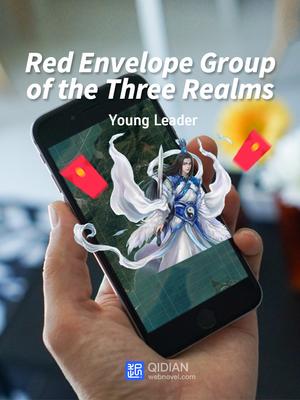
Red Envelope Group of the Three Realms
Chapter 1986 September 1, 2023 -
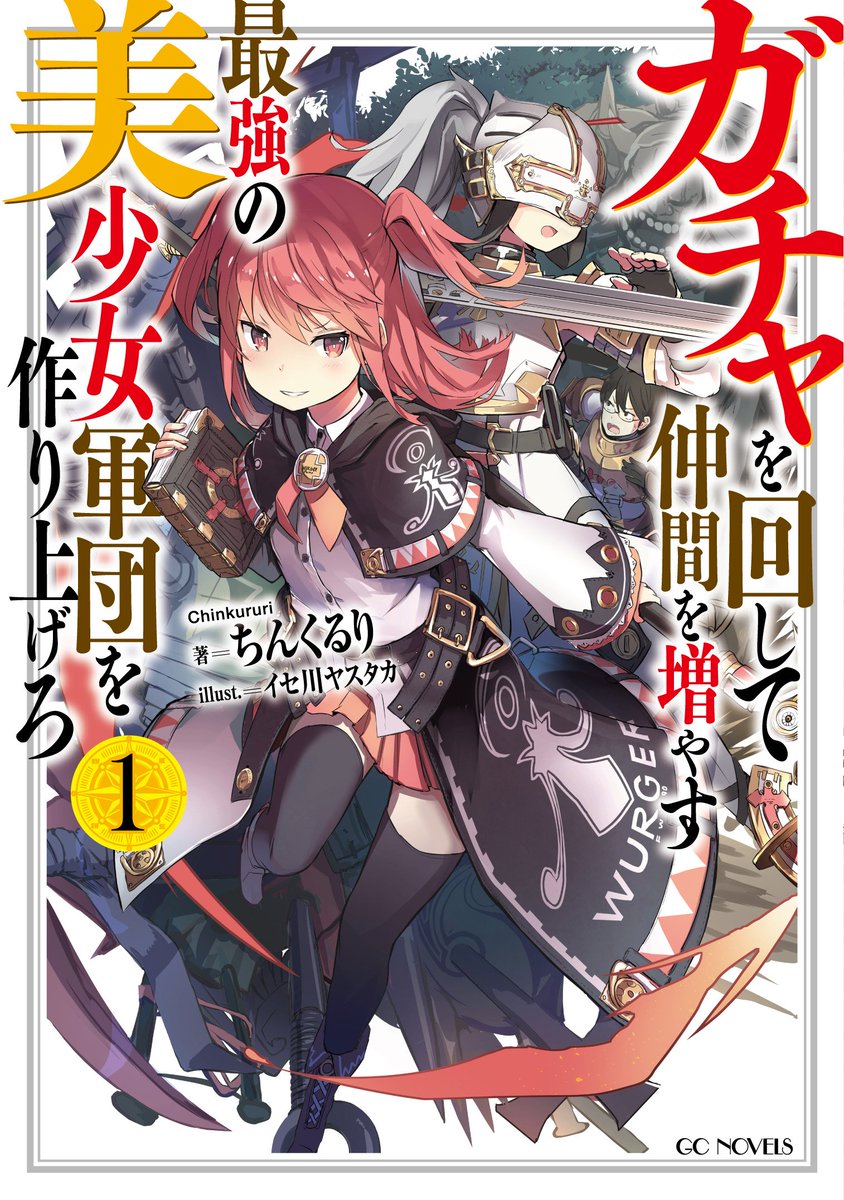
Using Gacha to Increase My Companions and to Create the Strongest Girls’ Army Corps
Chapter 84 August 28, 2023 -
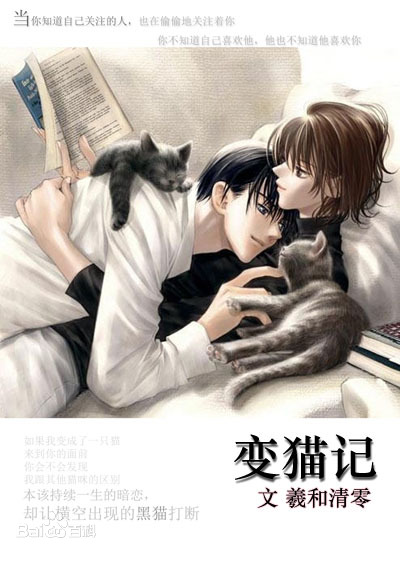
The Cat Transformation
Chapter 27 August 26, 2023 -
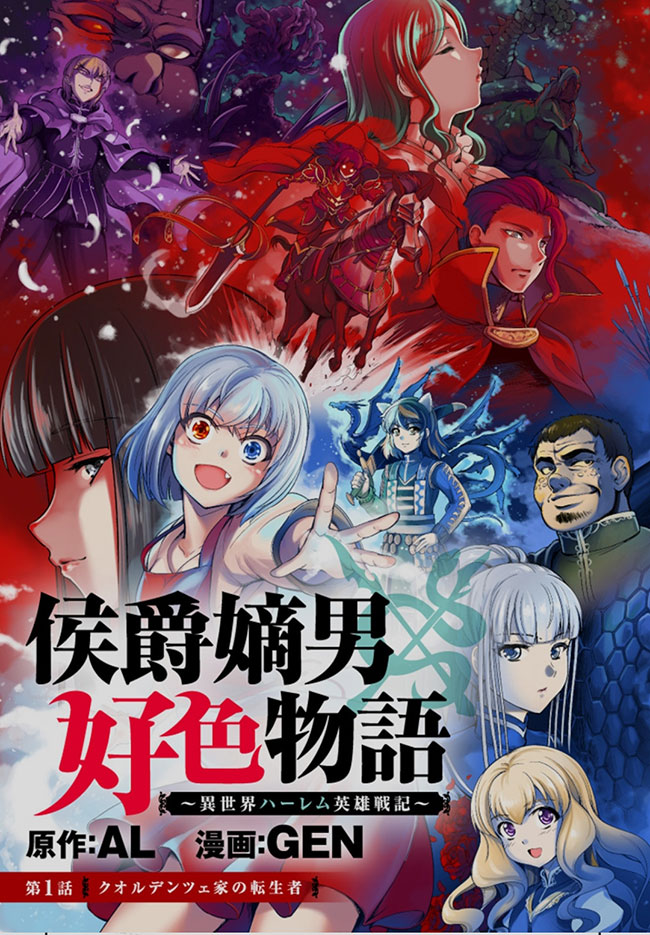
The Marquis’ Eldest Son’s Lascivious Story
Chapter 232 August 26, 2023 -
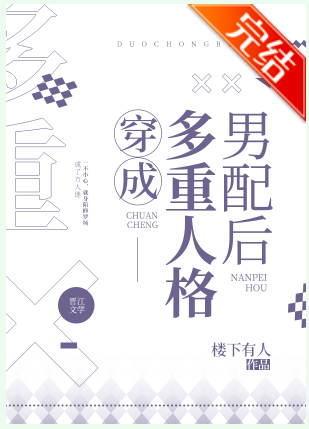
After Dressing as a Male Lead with Multiple Personalities
Chapter 14 August 11, 2023 -
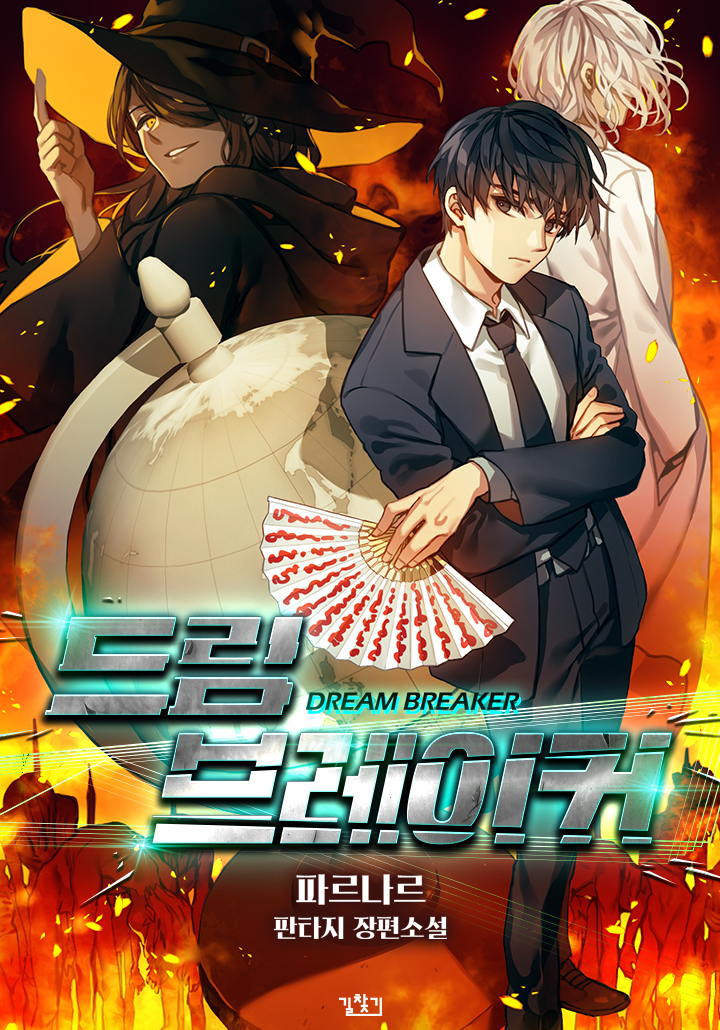
Dream Breaker
Chapter 33 August 8, 2023 -
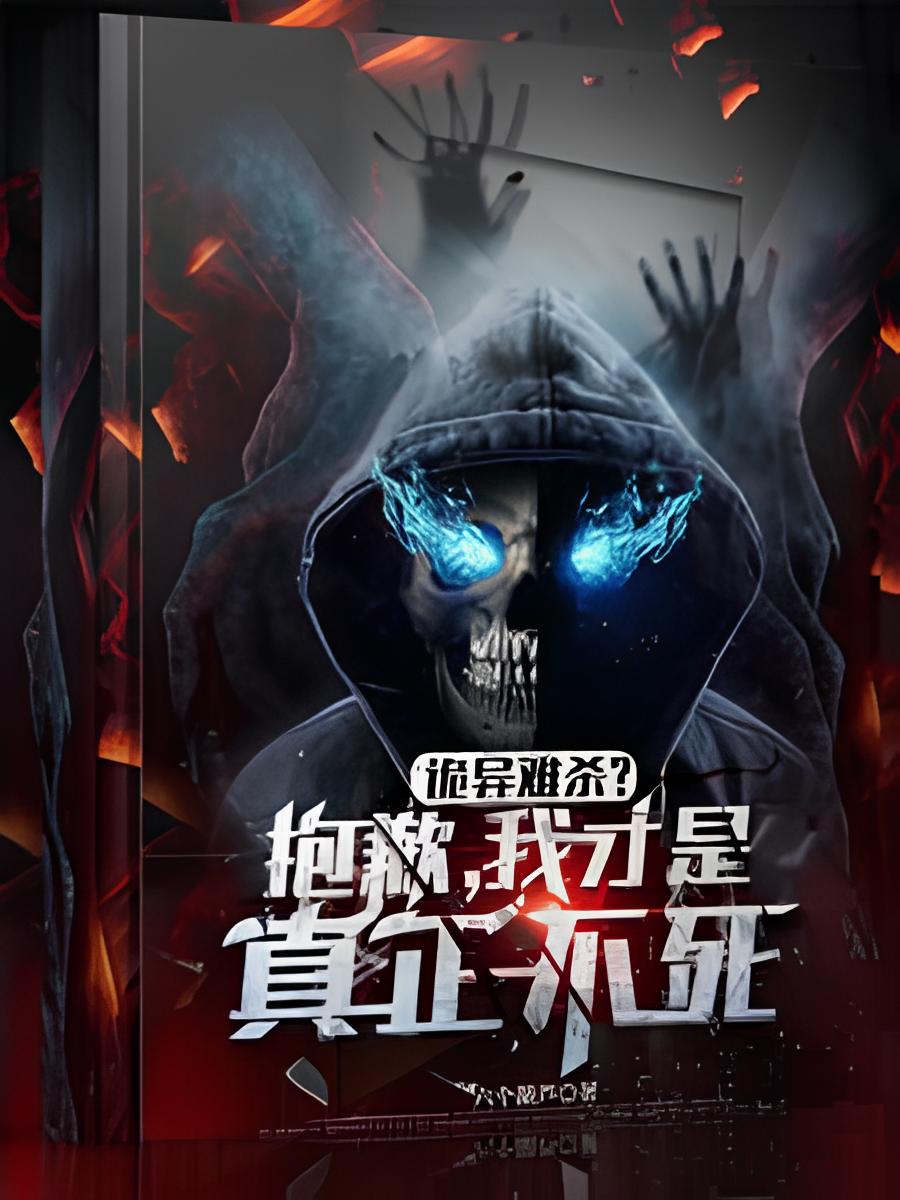
Die, Replay, Repeat
Chapter 2 August 8, 2023 -
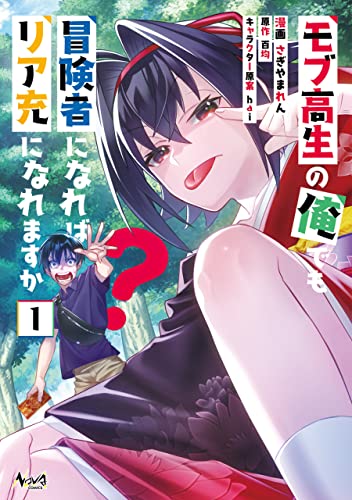
Can Even a Mob Highschooler Like Me be a Normie if I Become an Adventurer?
Chapter 24 August 7, 2023 -
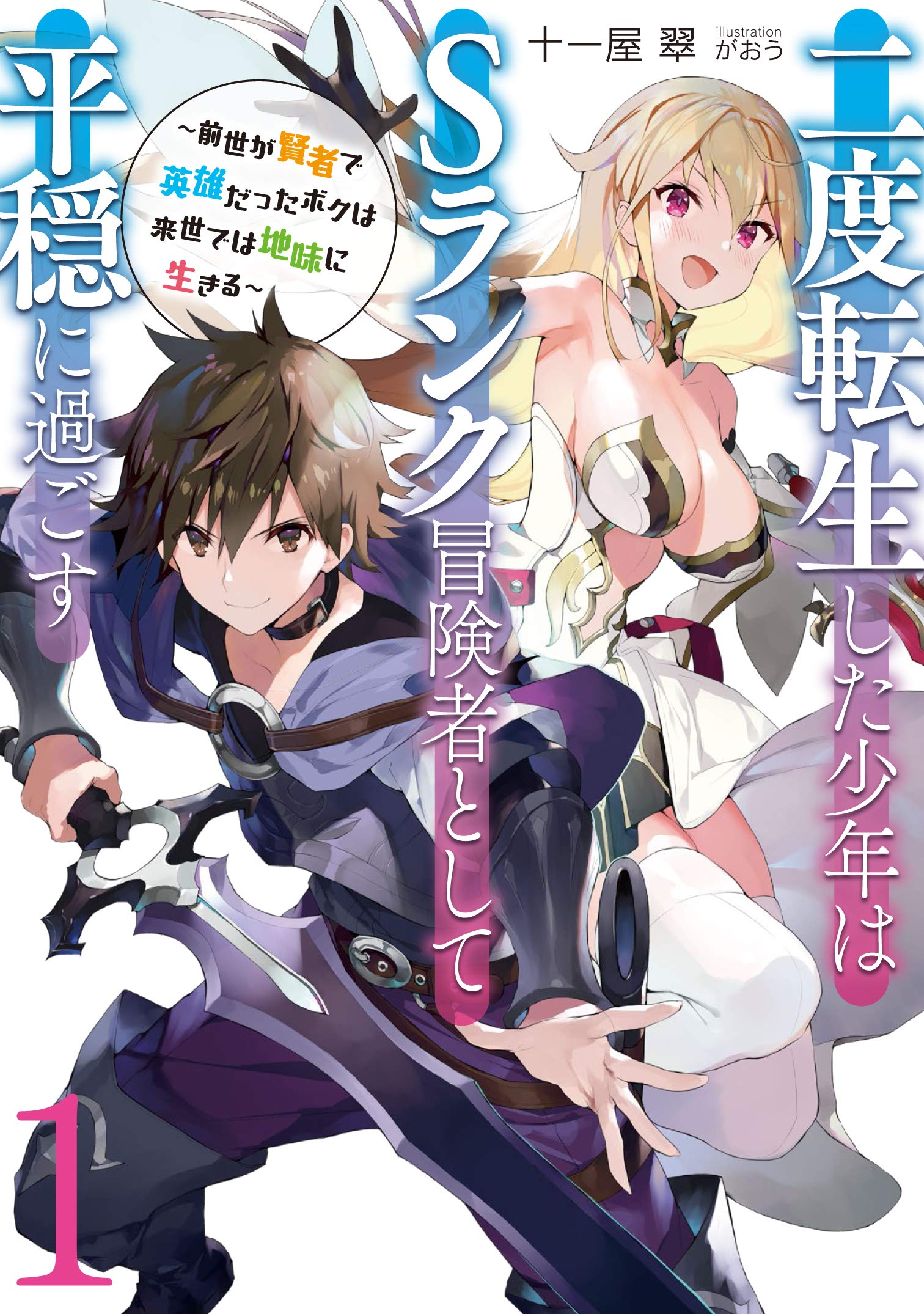
Nido Tensei Shita Shounen wa S-rank Boukensha Toshite Heion ni Sugosu ~ Zense ga Kenja de Eiyūdatta Boku wa Raisede wa Jimi ni Ikiru ~
Chapter 90 August 7, 2023 -
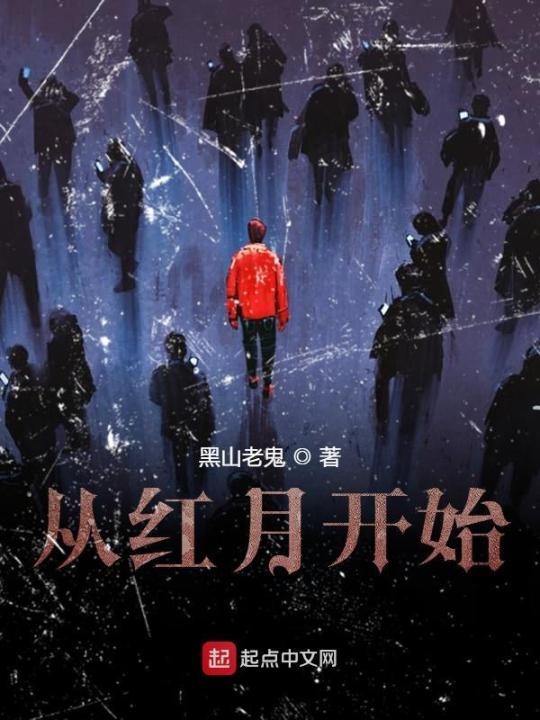
Since The Red Moon Appeared
Chapter 19 August 3, 2023 -
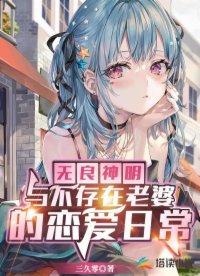
The Daily Love Life Of The Immoral God And His Invisible Wife
Chapter 111 August 2, 2023 -
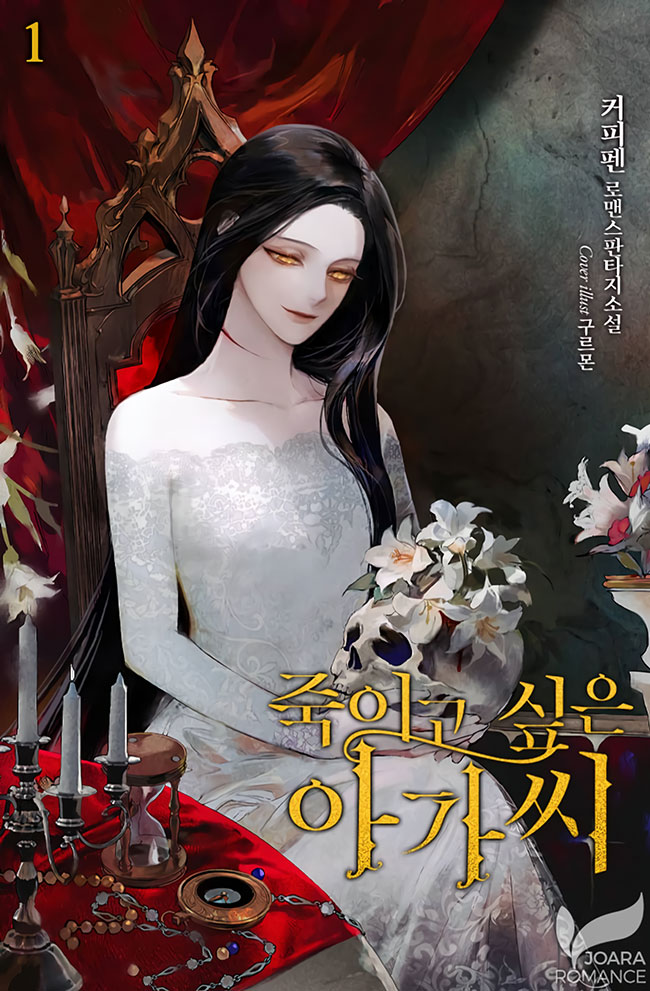
The Lady You Want to Kill
Chapter 18 August 1, 2023
